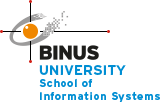CONCERNS IN AGILE AUDIT REVIEW

The review phase of an Agile audit is critical to ensure the effectiveness of the audit process and to provide meaningful insights. However, several concerns may arise during this phase, which auditors must address to maintain value delivery and stakeholder satisfaction. an Agile audit plays a vital role in ensuring the audit process is effective and generates valuable insights. However, this stage may present several challenges that auditors need to address to uphold value delivery and meet stakeholder expectations.
- Misalignment of Expectations
- Stakeholder Expectations: Discrepancies between what stakeholders expect and what the audit delivers.
- Inconsistent Objectives: Misunderstanding or lack of clarity around audit goals and outcomes.
- Solution: Maintain transparent communication throughout the audit and confirm alignment during review meetings.
- Lack of Stakeholder Engagement
- Limited Involvement: Key stakeholders might not participate actively during the review process.
- Delayed Feedback: Slow or incomplete feedback can hinder timely adjustments and recommendations.
- Solution: Schedule regular review sessions and use collaboration tools to keep stakeholders engaged.
- Difficulty in Communicating Findings
- Technical Jargon: Audit findings may be presented in overly technical language, making them hard to understand.
- Unclear Recommendations: Observations without actionable solutions can confuse stakeholders.
- Solution: Use clear, concise language, and support findings with visual aids like dashboards, graphs, and summary reports.
- Inadequate Documentation of Review
- Incomplete Records: Missing or poorly maintained documentation can lead to gaps in the review process.
- Ambiguity: Lack of detailed records makes it challenging to follow up on audit findings.
- Solution: Ensure comprehensive and structured documentation of all review discussions, findings, and decisions.
- Resistance to Feedback and Change
- Defensive Responses: Teams may resist feedback, especially if findings highlight significant process gaps.
- Lack of Buy-In: Recommendations might be ignored if teams do not see their value or relevance.
- Solution: Foster a culture of trust and collaboration, emphasizing that the audit is a tool for improvement, not criticism.
- Overlooking Emerging Risks
- Dynamic Environments: Agile projects evolve rapidly, and new risks might surface during the review phase.
- Solution: Continuously monitor for changes and update the audit review findings to address new or shifting risks.
- Time Constraints
- Limited Review Time: Tight deadlines can lead to rushed reviews, potentially overlooking critical issues.
- Solution: Allocate sufficient time for review sessions and streamline review processes using Agile methodologies, such as time-boxed meetings.
- Overemphasis on Process Over Outcomes
- Process Focus: Reviews may concentrate too much on compliance with Agile processes, neglecting the audit’s value to business outcomes.
- Solution: Balance the focus between process adherence and the delivery of actionable, value-driven recommendations.
- Lack of Consistency in Review Framework
- Ad Hoc Reviews: Inconsistent review practices may lead to incomplete or biased conclusions.
- Solution: Develop a standardized review framework that aligns with Agile principles but remains flexible for iterative improvements.
- Failure to Incorporate Feedback
- Missed Opportunities: If feedback from previous iterations or audits is not addressed, recurring issues may persist.
- Solution: Implement a feedback loop to integrate insights from past reviews into current and future audits.
- 1 Maintaining Audit Quality and Rigor:
- Consistency: Ensuring consistent application of audit standards and procedures across sprints and throughout the engagement.
- Documentation: Maintaining adequate and comprehensive audit documentation in an iterative and potentially less structured environment.
- Objectivity: Maintaining objectivity and independence while fostering collaboration and open communication with auditees.
- 1 Ensuring Adequate Coverage:
- Scope Creep: Addressing the risk of scope creep as the audit progresses and new information emerges.
- Risk Prioritization: Ensuring that the most critical risks are adequately addressed and not overlooked due to the iterative nature of the audit.
- Comprehensive Testing: Ensuring that sufficient testing is performed to obtain adequate audit evidence.
- 1 Managing Change and Flexibility:
- Adaptability: Effectively adapting to changing circumstances, such as shifting priorities, new information, or unexpected events.
- Maintaining Control: Ensuring that the audit remains on track and achieves its objectives despite the inherent flexibility of Agile auditing.
- 1 Communication and Collaboration:
- Effective Communication: Maintaining clear and consistent communication with all stakeholders throughout the audit process.
- Building Trust: Building and maintaining trust with auditees while maintaining audit independence.
- Managing Expectations: Effectively managing expectations of stakeholders regarding the audit timeline, deliverables, and findings.
- 1 Resource Allocation and Management:
- Skill Development: Ensuring that auditors possess the necessary skills and training to effectively conduct Agile audits.
- Resource Allocation: Effectively allocating resources (time, personnel, technology) across sprints and throughout the audit engagement.
- Managing Team Dynamics: Effectively managing team dynamics and ensuring that all team members are engaged and productive.
- 1 Technology and Tools:
- Data Security and Integrity: Ensuring the security and integrity of audit data and information stored electronically.
- Tool Proficiency: Ensuring that auditors are proficient in using the necessary tools and technologies to support Agile auditing.
- Data Analysis and Visualization: Effectively analyzing and visualizing audit data to identify trends and insights.
- 1 Regulatory and Compliance Considerations:
- Compliance with Standards: Ensuring that Agile auditing practices comply with relevant auditing standards and regulatory requirements.
- Legal and Ethical Considerations: Addressing legal and ethical considerations related to data privacy, confidentiality, and the use of technology.

